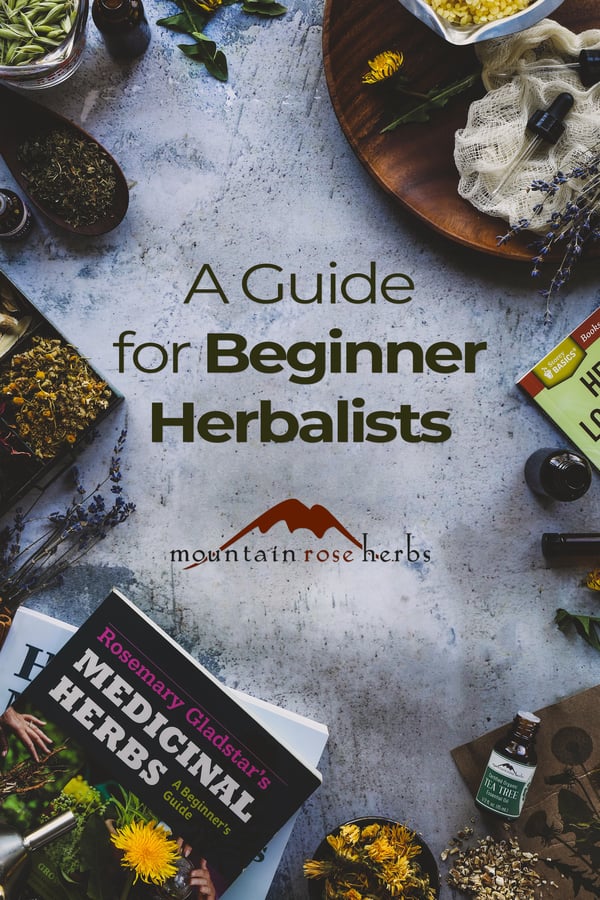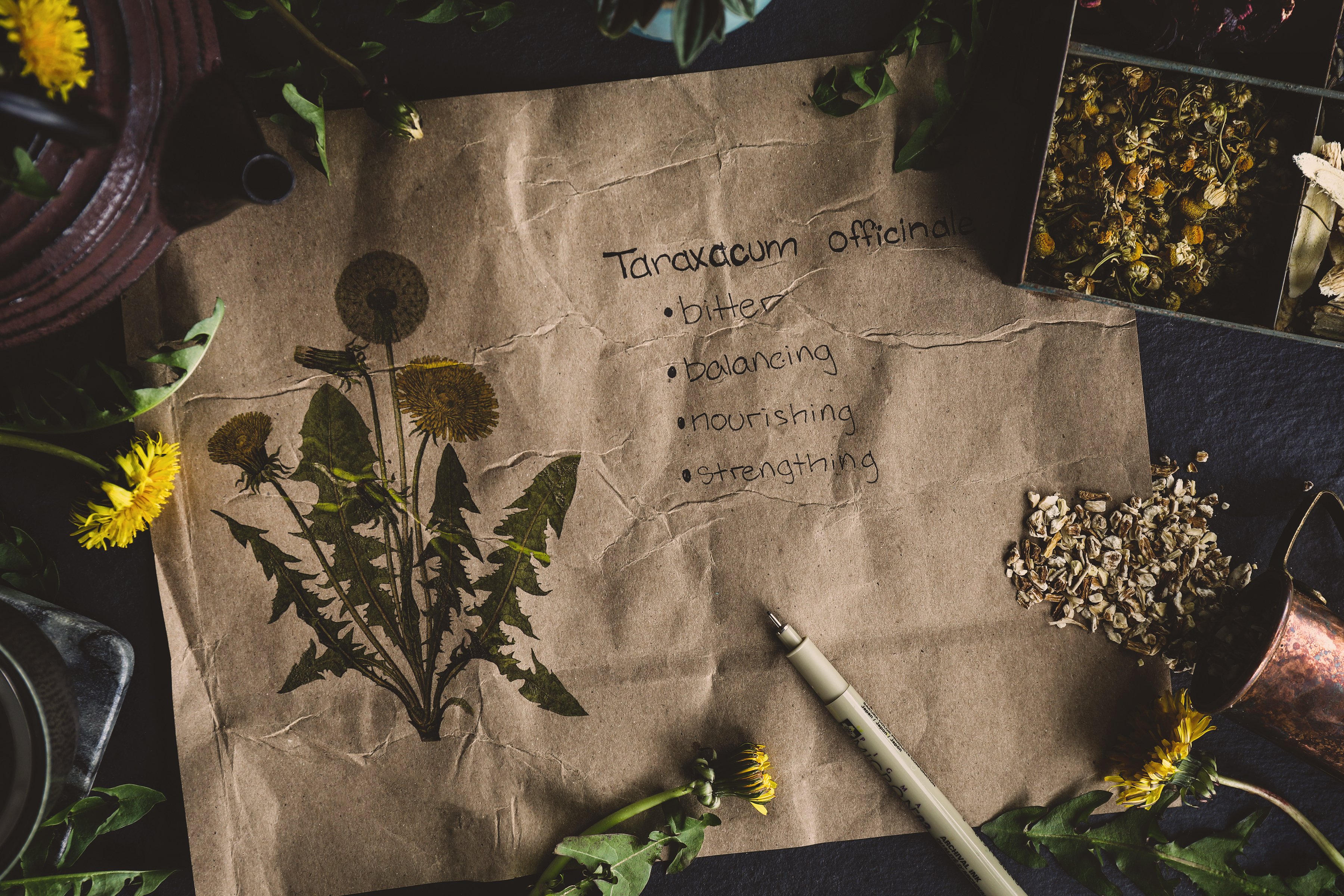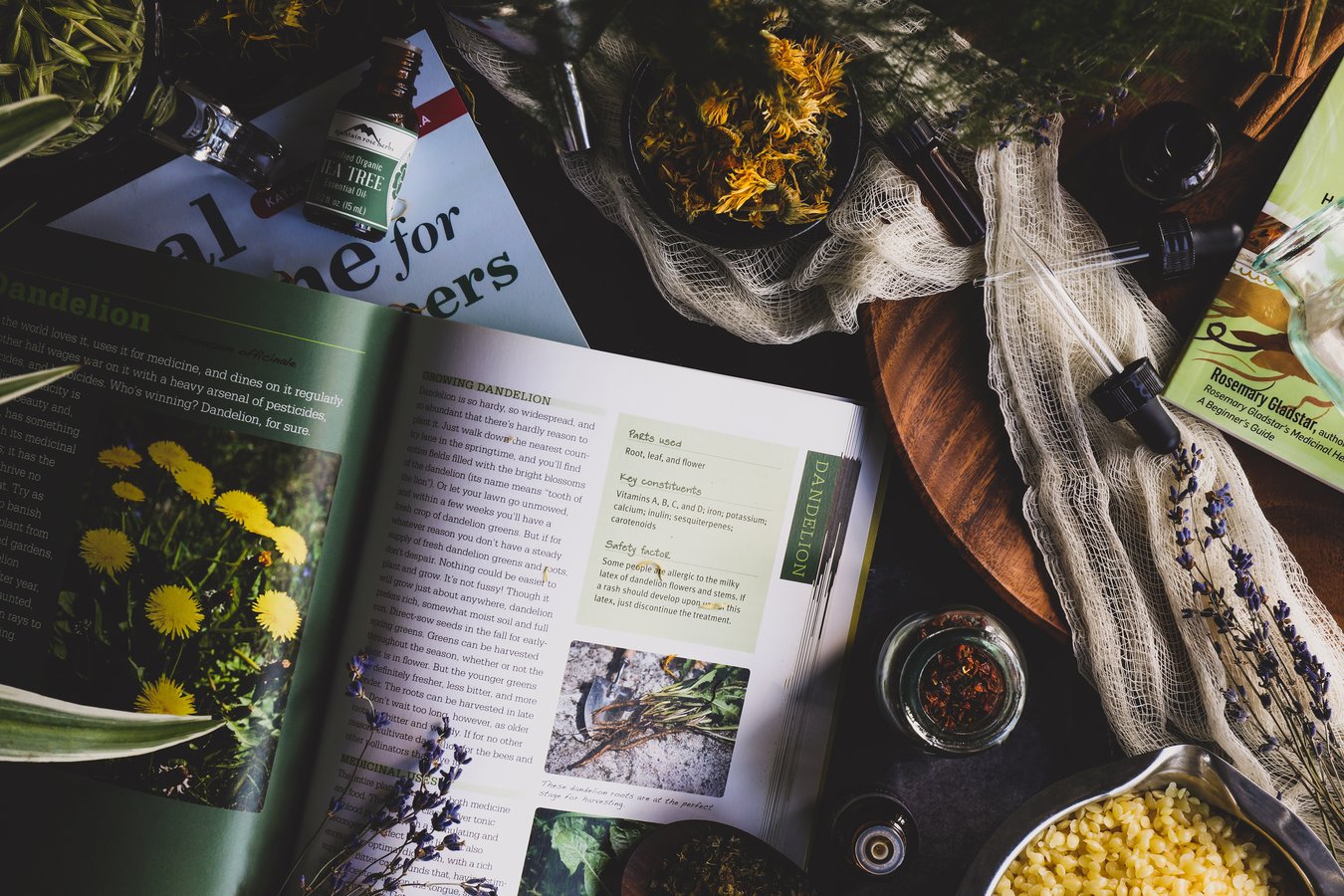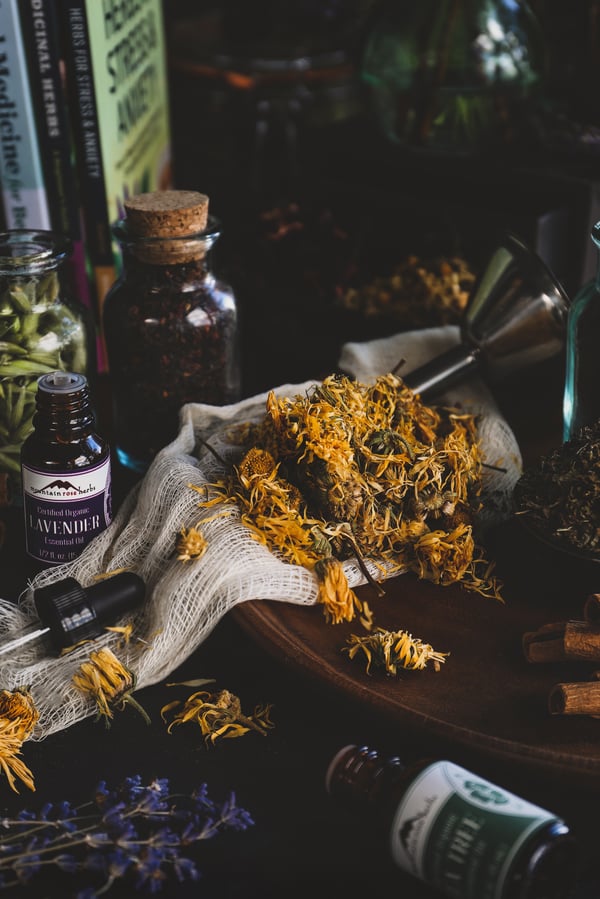Are you interested in learning about herbalism, but aren’t sure where to begin? Many of us grew up learning more on this subject than we realized; we drank teas when we didn’t feel well, or we put our head over a bowl of steaming vapor, or we ate a dish with curry for digestion, things that our parents or grandparents told us to do without ever saying the words “herb” or “herbalism.” When I was growing up, my father decocted ginger root for an upset stomach and pulled out chamomile tea for sleeplessness. He gave me raw honey for a scratchy throat and sour cranberry juice for bladder health. And yet, ironically enough, years later, when I developed a huge interest in this new thing—herbalism—I thought I was clueless on the subject. A lot of people have stories like mine; they don’t have any idea how much they know, or if what they know is correct or helpful, or how to begin to find out. If you’re ready to jump in, but aren’t sure how or what direction to aim, here is some helpful information.
Herbalism Starter Guide
When I was in herbalism school, one of the first assignments was to choose 12 herbs to explore for a year: essentially a different herb each month. The idea was to touch, taste, feel, read, learn, and journal everything we could about each of the herbs. Our herb choices needed to be safe for beginners and we were reminded to keep sustainability in mind because some of the most popular herbs are now at risk or endangered. This exercise was a wonderful way to consciously spend time with a botanical, to see how it resonated with me and my family, to find ways to incorporate each potential herbal ally into our lives.
I decided that the best way for me to select my “beginner kit” of herbs was to choose some I was already a little bit familiar with—drawing from those childhood teas and tinctures—and then get out of my comfort zone with others that were brand new to me. This way I could start on familiar ground and develop confidence with herbal formulations before launching into uncharted territory. If you choose to go this route, your choices will no doubt be different than mine. I started with calendula, elder (berry and flower), ginger, hibiscus, Oregon grape, and shiitake mushroom. Then I moved on to herbs I had no experience with: astragalus (as a substitute for at-risk echinacea), hawthorn, holy basil, marshmallow root, monarda/wild bergamot, and rosehips. Remember everyone is different!
Below is a list of excellent, organic “starter herbs.” I suggest purchasing a small amount to begin with, in case a particular herb turns out not to be for you. You can get more later if you discover a wonderful herbal ally.
- Astragalus root (as a substitute for echinacea)
- Burdock root
- Calendula flowers
- Chamomile flowers
- Chickweed
- Cinnamon
- Cleavers
- Dandelion leaf and root
- Elderberry and elderflower
- Ginger root
- Hawthorn leaf, flowers, and berries
- Hibiscus flowers
- Lavender or lavandin flowers
- Lemon balm
- Marshmallow root
- Nettle leaf
- Oregon grape root (as a substitute for goldenseal)
- Peppermint leaf
- Plantain leaf
- Rosehips
- Shiitake mushrooms
- Tulsi, Holy Basil
- Violet leaf
Start Building Your Herbal Library: Books for Beginning Herbalists
I had to wait a long time to be able to go to an official school of herbalism. In the meantime, I read everything I could get my hands on at my local library and used bookstores. The following titles are excellent beginning books for self-education.
Herbal Medicine for Beginners by Katja Swift and Ryn Midura—this excellent step-by-step guide provides information about 35 essential herbs that are common to most areas of the U.S. and offers over 100 easy-to-follow recipes for herbal formulations for common uses.
Herbs for Common Ailments by Rosemary Gladstar—This title is part of a series of Basics Guides by the Godmother of American Herbalism. Although it is not advertised as a beginner’s book, it is one of my favorite introductory herbalism books because it is so approachable and usable. It includes information on 56 herbs that are safe and effective for addressing common ailments and minor skin irritations.
Medicinal Herbs: A Beginners Guide by Rosemary Gladstar—This is another excellent introductory book by Rosemary. It provides information on growing and using 33 of her favorite herbs and easy recipes for making teas, salves, tinctures, oils, syrups, and lozenges.
Necessary Supplies for the Beginning Herbalist
You will need to put together a collection of tools for herbal crafting. It’s important to have tools that you don’t also use for cooking, particularly if you are interested in essential oils or herbs that are recommended for topical use only. I find stainless steel and glass to be the easiest to use and clean because they aren’t porous like plastic and wood and I can sterilize them in the dishwasher. But I’m a big believer in using what you have on hand, so just be very aware of cleanliness. Many of these tools are available at thrift stores.
When I first started in herbalism, I followed a list of “must-have” tools and was disappointed after-the-fact to discover that a goodly number of those must-haves weren’t actually necessary. So, with that in mind, I am keeping my essentials list short. These will get you started nicely.
- A small to medium size cooking pot that fits a double boiler
- A double boiler that fits your pot. I like a 2-cup version for small-batch herbal crafting
- Heat proof glass measuring cups and a full set of metal measuring spoons
- Small stainless-steel funnels for bottling your formulations
- Cheesecloth for straining
- Mixing bowl(s) and hand mixer if you are making blended formulations like body butters
- A couple of mixing spoons and rubber spatulas
- Containers to hold your finished products (I encourage up-cycling used containers when possible; see our blog on how to clean and re-use them)
If you are interested in making skin and hair care recipes, you may also need carrier oils, butters, beeswax or carnauba wax, and other DIY ingredients. I suggest getting those in small amounts based on your recipe, rather than trying to project what you might want to have on hand.
And finally, essential oils can make DIY crafting even more enjoyable, but it is crucial that you use and store them safely. I highly recommend starting with the following organic essential oils:
You can also purchase all of these oils in sampler sizes in our Classic Essential Oil Kit.
The world of herbalism is vast and inspiring, but also can be confusing and overwhelming. I hope these lists help you begin your journey. Welcome to the community; we’re excited you’re joining us!
Looking to learn more about how herbs work?
Explore the Guide to Basic Herbal Actions
You may also enjoy these easy recipes:
- Watch Our Free Educational Videos on YouTube
- How to Make an Herbal Tincture
- Herbal Oxymel Recipes and Benefits














